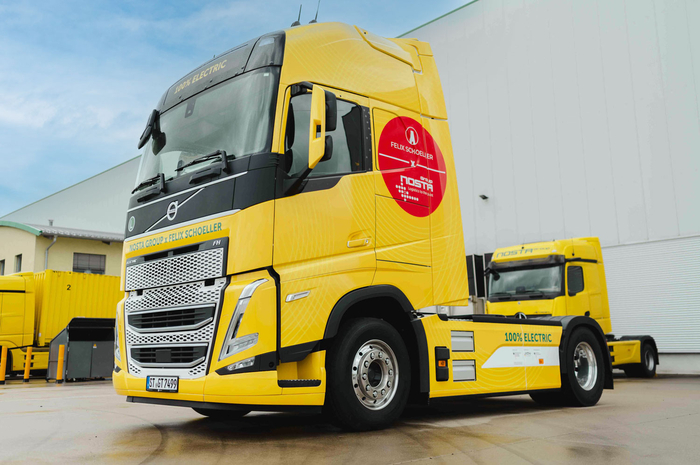More than three months have already passed since the start of the electric shuttle project at our Siebenlehn site. It is about time for an update on how the project is currently going and how the three e-trucks are performing in everyday working life. The team on site has three important facts to show how the new additions to our fleet are having a positive impact.
Fact 1: Emissions are Reduced
To calculate reduced emissions, the team in Siebenlehn used a method developed by the renowned tire manufacturer Michelin. The results are impressive: “We cut carbon emissions by more than 41,000 kilograms between April and June,” Jörg Prochaska, Regional Manager Business Development, reports. For comparison: according to the German Federal Environment Agency, average per capita emissions in Germany are just over 10 tons per person each year.
Fact 2: Operating processes continue to run smoothly
Shortly after the start of the project, we received many questions about the electric trucks. Most of these questions revolved around the vehicles' suitability for everyday use: Will the charging times be sufficient? Will the trucks simply stop on the road? But reality shows: Everything continues to work as usual. This can also be seen in specific figures, as Bernd Weig, fleet manager in Siebenlehn, can report: “We covered 34,150 kilometers electrically between April and June without any problems.”
Fact 3: Fuel is no Longer an Issue
The figures also speak for themselves when it comes to fuel. “We calculated the possible consumption based on the previous fuel usage of the conventional trucks. We ended up with 15,026 liters of diesel, which we no longer have to use,” explains Bernd Weig. And thanks to the charging stations directly at the loading ramps, no trip to a public charging station has been necessary so far.
And finally, there is the subjective impression that the noise level of the electric vehicles is also positive. For Jörg Prochaska, there is another fact that makes this clear: “When they are stationary and when they start up, the engines of the trucks make no noise.” This is certainly a noticeable relief for the residents along the route.
In the coming months, we will share further updates on the progress of the project and show what practical effects the electric trucks will have for us in Siebenlehn.
Road Services Launch NOSTA E-Trucks
Transparency Information
The calculation method used for determining the amount of carbon emissions saved was developed tire manufacturer Michelin. The German Federal Environment Agency states on its website that the per capita emissions in Germany are 10.35 tons per year.
Update October 2024 - Emissions Continue to Decrease
The months from July to September marked further progress for our project: we achieved more improvements in all categories. Compared to the first project period, the team in Siebenlehn added a little more than 6,000 kilometers, bringing the total to more than 40,000 kilometers driven electrically.
It is therefore logical that the lower emissions and fuel savings are also clearly visible. Just over 19,000 liters of diesel were not consumed and the savings in emissions are 50,000 kilograms of CO2.


